Grandma’s Gu Cai Neng
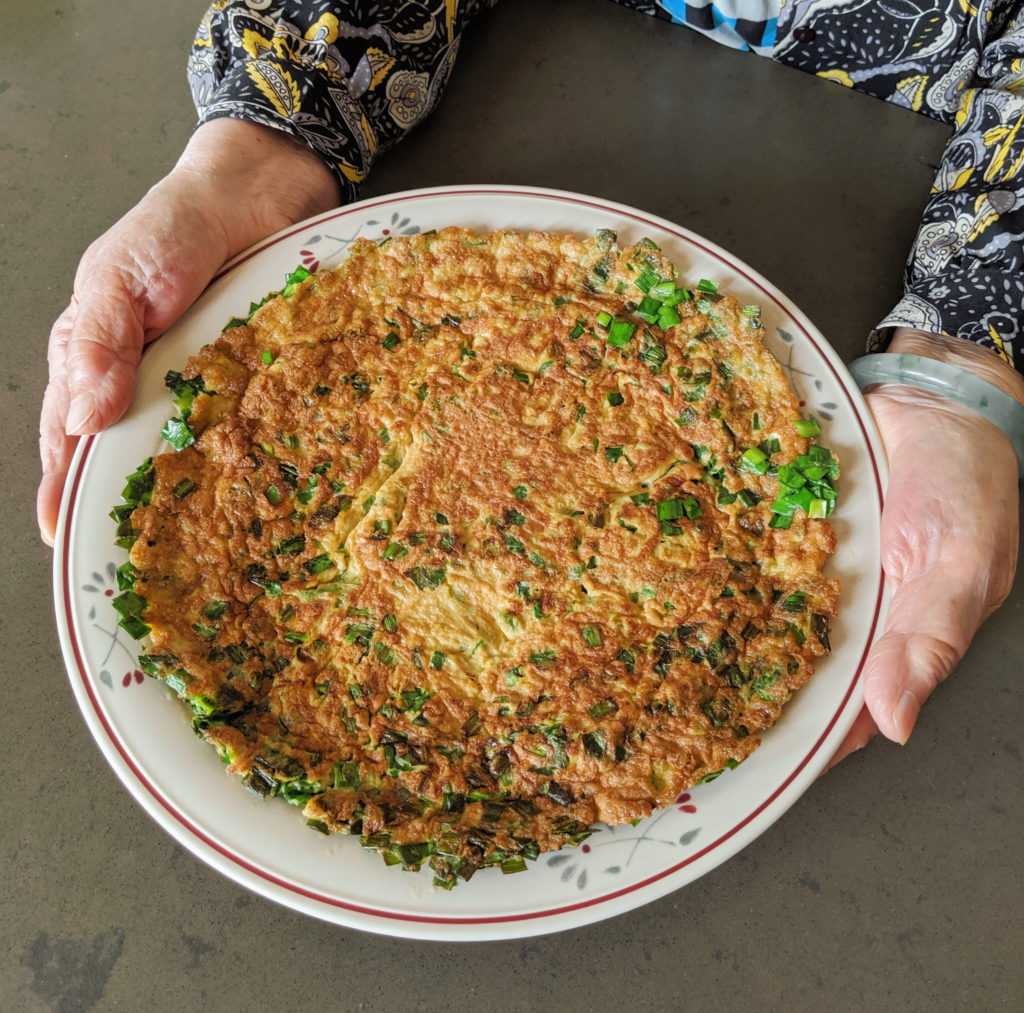
Taiwanese people love omelettes. There’s the famous oyster omelette, of course, and the popular cai poh neng or dried radish egg. My grandma make hers with garlic chives (gu cai). Garlic chives are really fragrant and thinner than green onions/scallions. You can find them in Asian supermarkets like Ranch 99, and they may be called nira if you’re shopping in a Japanese market.
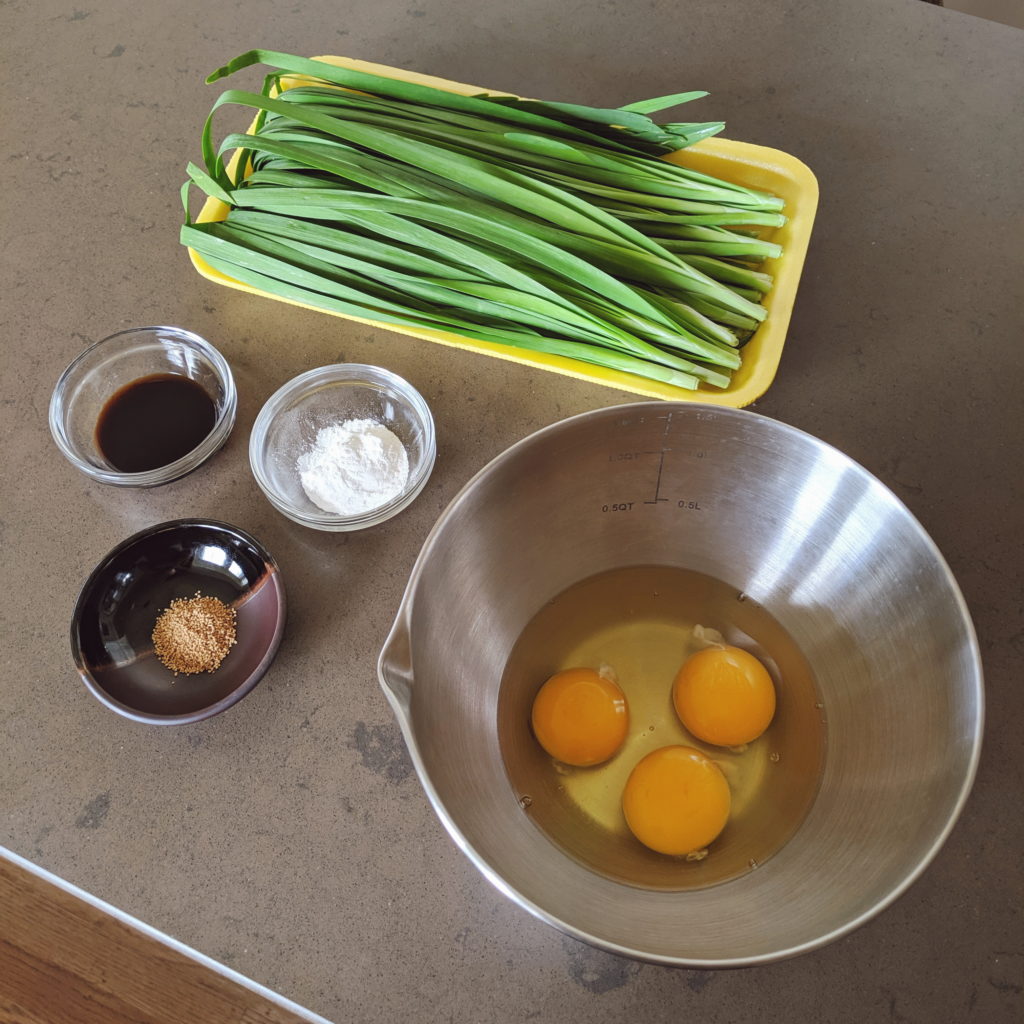
Ingredients
3 large eggs
1/4 lb garlic chives
1 tbsp soy sauce (I use Kikkoman)
1/2 tsp dashi powder (like Ajinomoto) or salt
1 tsp cornstarch or tapioca starch, mixed with 1 tbsp cold water
1-2 tbsp oil for cooking, depending on how non-stick your pan is
Wash the garlic chives, shake off any excess water, and chop into 1/2 centimeter pieces.
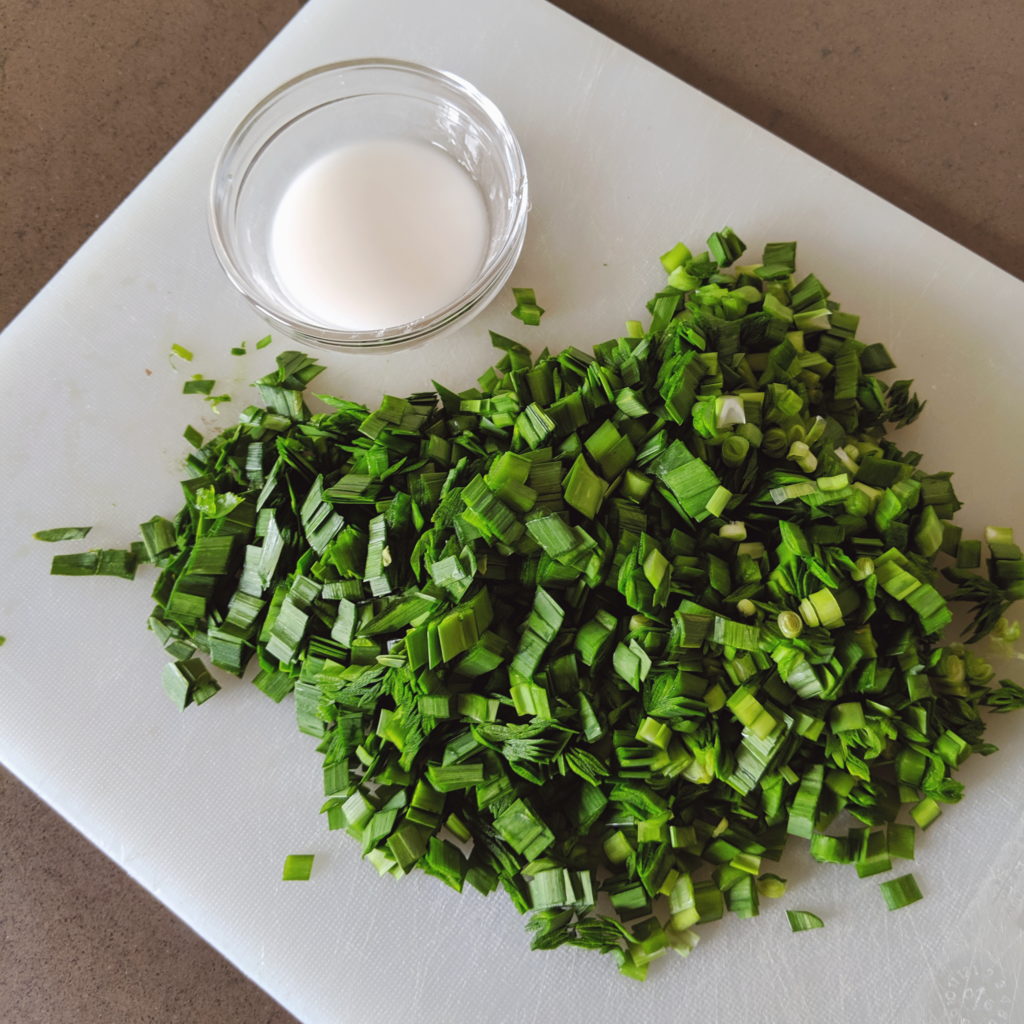
Beat your eggs in a mixing bowl, then add soy sauce, dashi powder OR salt, and cornstarch that’s been dissolved in 1 tbsp. cold water. Whisk well, incorporating some air–this will make the omelette fluffier.
In a frying pan, heat 1-2 tbsp. cooking oil (I use olive oil, but canola also works well).
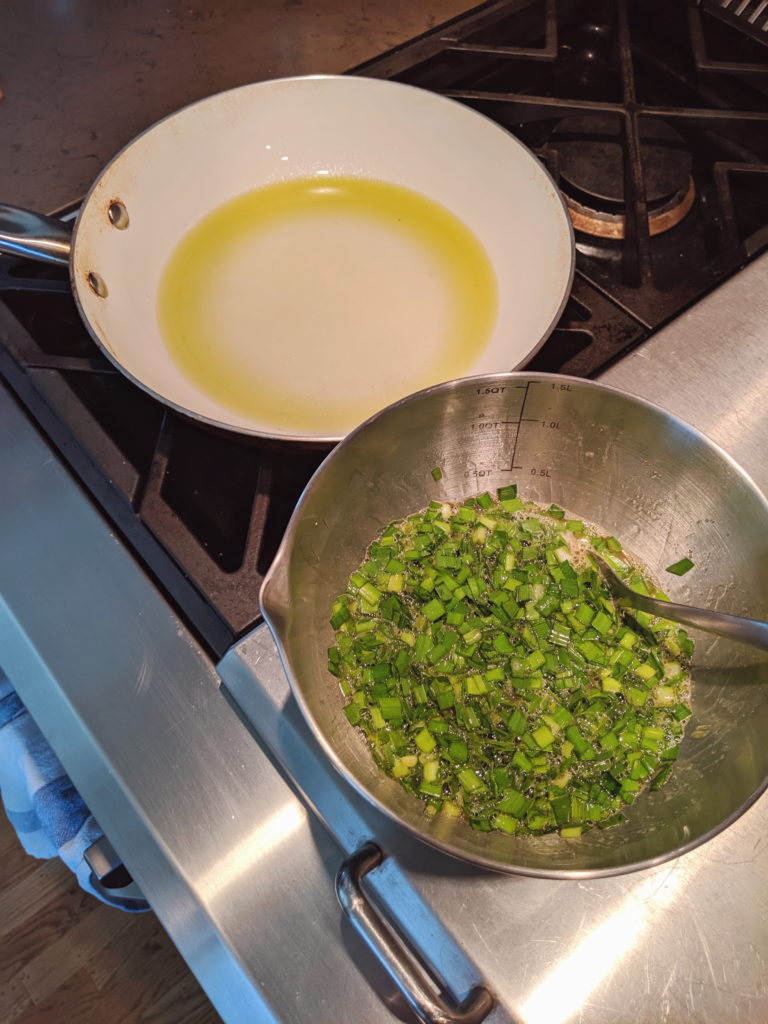
While the oil is heating up, add your chopped chives to the egg mixture, mix thoroughly, then pour everything into the pan. As with Western omelettes, you’ll want the pan hot to start, so you can move the egg around and get the bottom cooked before reducing the heat. Make sure your chives are distributed somewhat evenly, and press the chives toward the bottom of the eggs if possible.
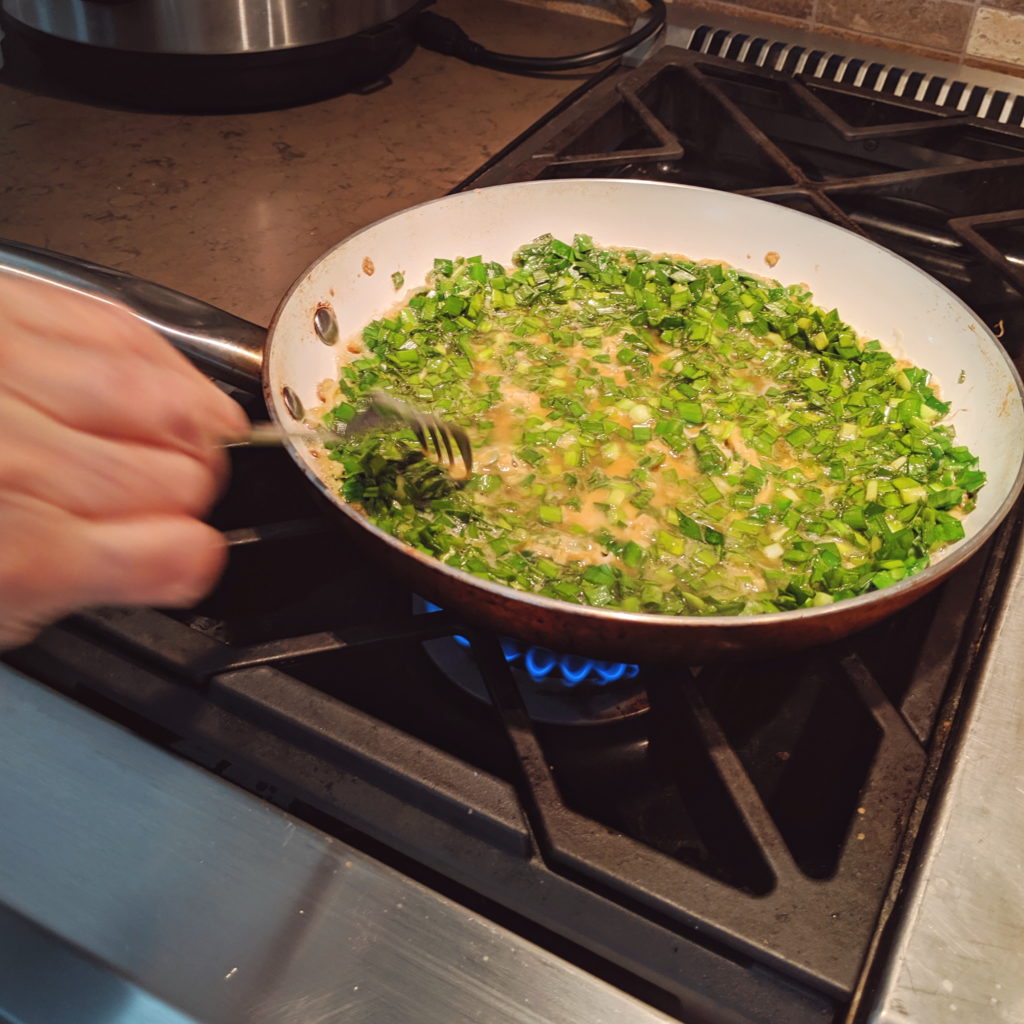
Once the egg has mostly set, you should be able to shake it loose from the pan. Slide the omelette onto a large plate. If your plate is large enough to cover the pan, you can cover the plate with the pan, and flip the omelette back in. USE OVEN MITTS if you want to do this as the pan is hot, remember 😉 Alternately, you can put a second plate on top of the first, flip the plates, then slide the omelette back into the pan.
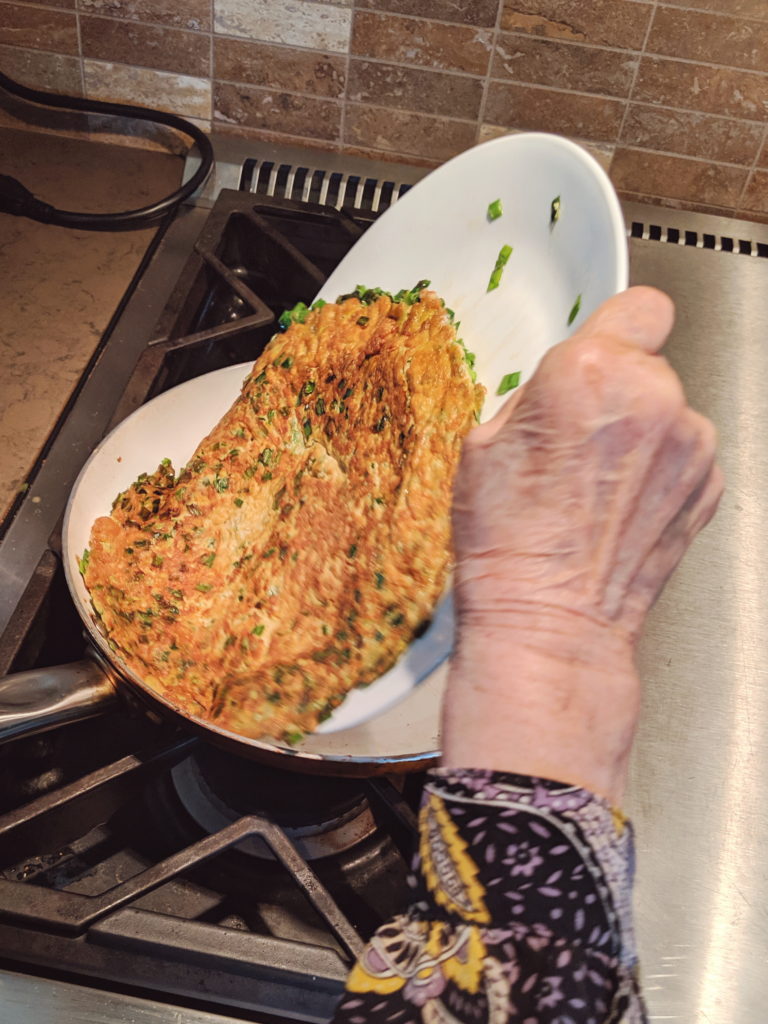
Cook the other side for 2-3, and you’ve got my Ama’s Gu Cai Neng.
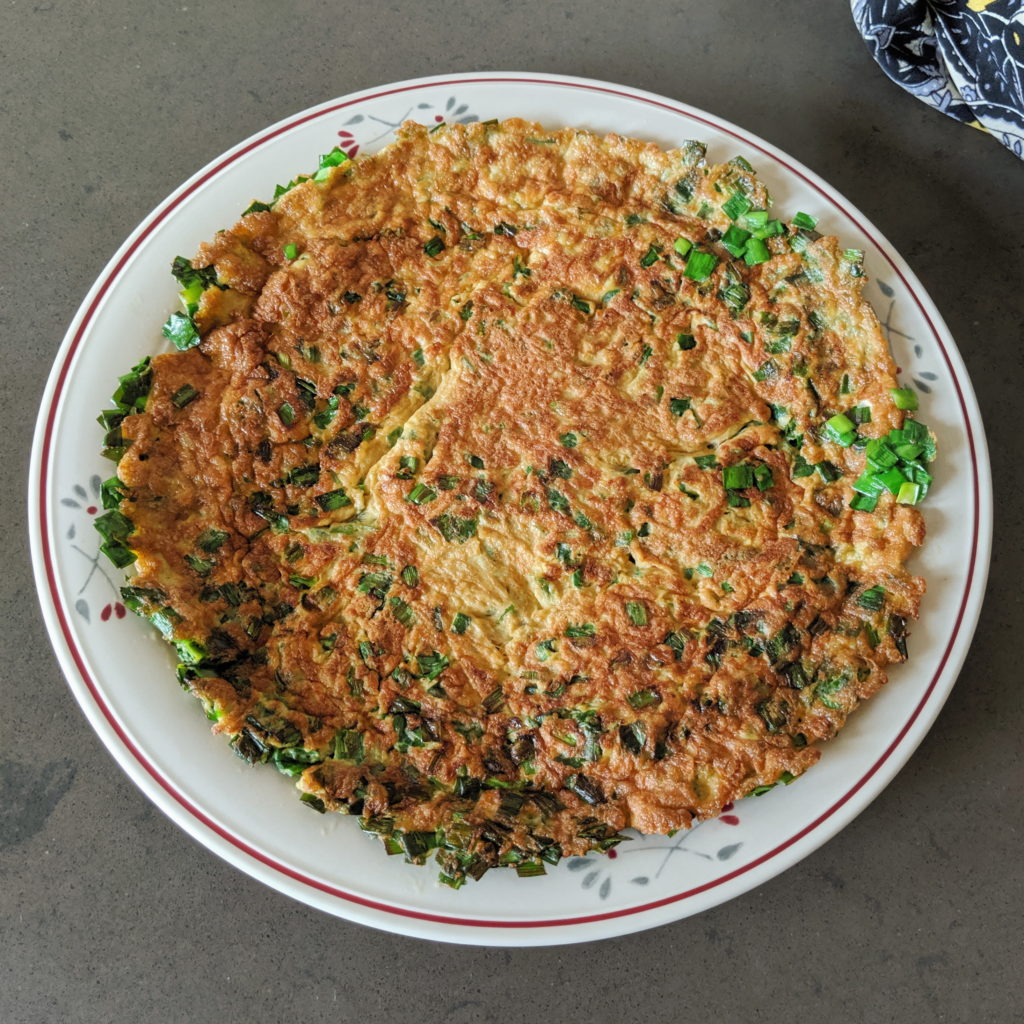
Enjoy over rice or with porridge. Sometimes I make sandwiches using mantou/steamed buns. It’s also good served at room temperature and makes a nice topping for cold dipping soba.

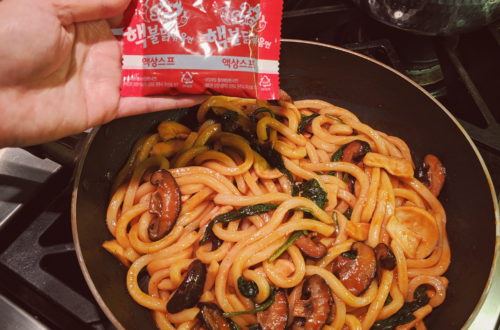
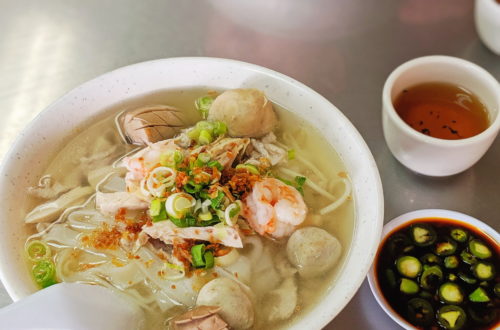

6 Comments
Linna Lippke
Thanks! Can’t wait to try it.
Lydia Chen
Let me know how it goes! 🙂
Phi
HURRAY!! Beautiful photos. I haven’t had garlic chives in a while so I’m definitely going to try making this at home 🙂
Lydia Chen
Yay, thank you!! We need to get together for another food day soon.
Nancy
I loved the recipe and especially loved seeing Ama hands making the omelette!
Pingback: